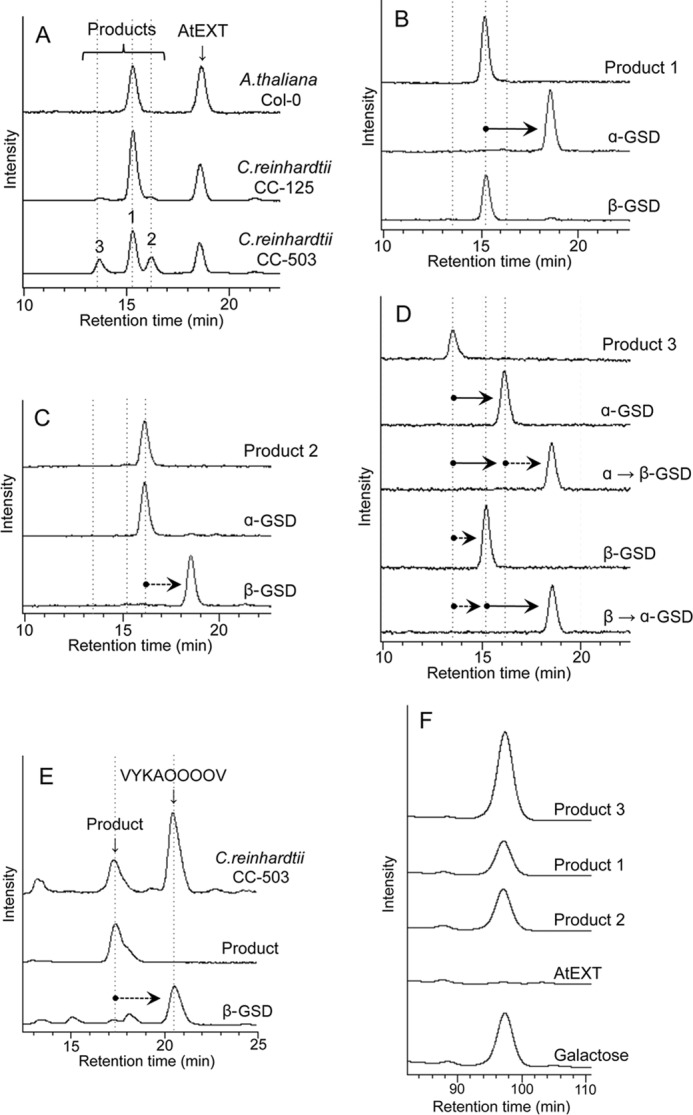FIGURE 1.

A, HPLC analysis of A. thaliana and C. reinhardtii peptidyl galactosyltransferase activity. P100 fractions were prepared from A. thaliana cells (Col-0), C. reinhardtii CC-125 cells, and C. reinhardtii cell wall-less mutant CC-503 cells. The P100 fraction (100 μg for A. thaliana or 10 μg for C. reinhardtii) was incubated with the assay mixture described under “Experimental Procedures” containing AtEXT peptide as an acceptor at 30 °C for 10 h (A. thaliana) or 3 h (C. reinhardtii) and then analyzed by HPLC. The acceptor peptide (AtEXT) was eluted at 18.8 min, and three enzymatic reaction products were detected, indicated as products 1, 2, and 3, at 15.2, 16.1, and 13.7 min, respectively (these are indicated with vertical broken lines in A–D). B–D, HPLC analysis of products after α- and β-galactosidase (GSD) treatment. B shows product 1 before and after galactosidase treatment, and C shows product 2 before and after treatment. D shows product 3 before and after treatment. α→β-GSD indicates product 3 treated with β-GSD after α-galactosidase treatment. β→α-GSD indicates product 3 treated with α-galactosidase after β-galactosidase treatment. The sequence of AtEXT peptide was FITC-Ahx-VYKSOOOOV-NH2. O indicates hydroxyproline. E, P100 fraction (10 μg) of C. reinhardtii CC-503 cells was incubated in an assay mixture containing VYKAOOOOV peptide as an acceptor at 30 °C for 3 h and then analyzed by HPLC. The product was collected and treated with β-galactosidase. F, monosaccharide analysis of products 1–3. In each case, 100 pmol of the products, the AtEXT peptide, and an authentic galactose standard were acid-hydrolyzed, labeled with PA (35), and analyzed by HPLC using a TSKgel sugar AXI column. PA-galactose was detected at 97 min, whereas PA-glucose and PA-mannose were detected at 55 and 62 min, respectively (data not shown).
